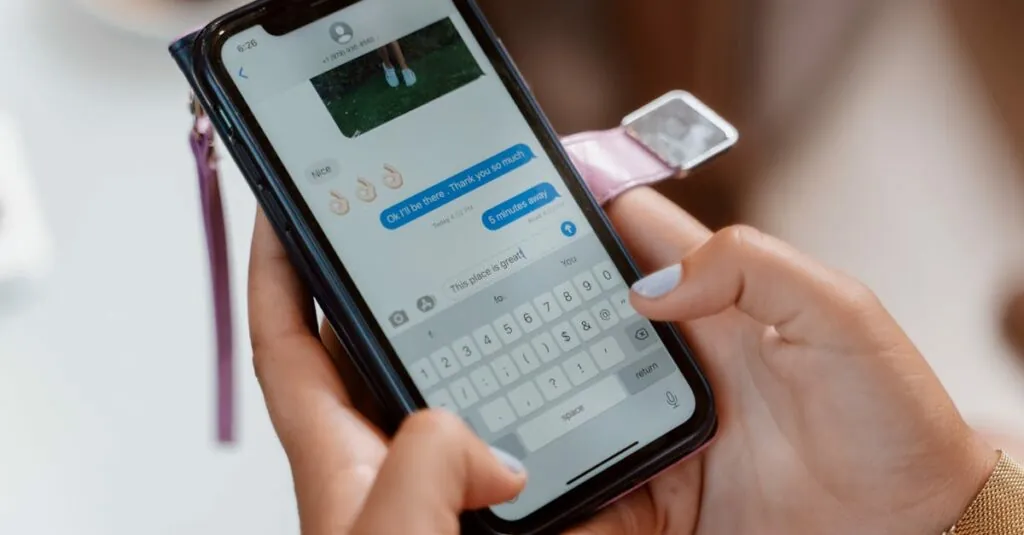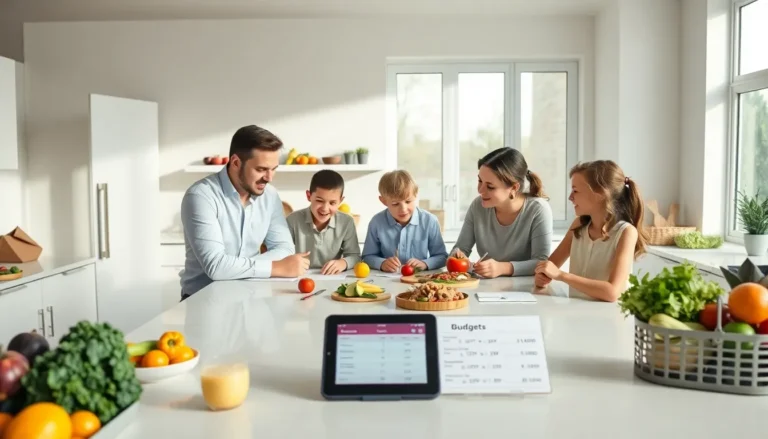Table of Contents
ToggleIn a world where texting and emailing reign supreme, the thought of sending a fax might seem as outdated as using a rotary phone. But what if your iPhone could pull off this retro move? Imagine the look on your boss’s face when you whip out your phone and send that important document in a flash, all while sipping your coffee.
Overview of Faxing from Mobile Devices
Faxing from mobile devices remains an option for individuals needing to send important documents quickly. Modern technology simplifies this process, allowing users to fax directly from their iPhones. Various apps exist, designed specifically for faxing purposes. These applications typically enable users to scan documents, upload files, and send them as faxes in a matter of minutes.
In the context of mobile faxing, usability matters. Many faxing apps feature user-friendly interfaces, making the process accessible even for those unfamiliar with fax technology. Users can browse their document libraries, select files, and get prompts to complete the fax sending process.
Security stands as a priority when it comes to transmitting sensitive information. Trusted faxing apps often employ encryption to safeguard users’ documents during transmission. This feature ensures sensitive data remains confidential, addressing concerns that come with digital communication.
Cost also plays a role in choosing a mobile faxing solution. Some apps offer free services with limitations, while others may charge a modest fee for more comprehensive features. Users should compare different options and consider how many pages they need to fax regularly.
Lastly, reliability remains crucial. Many users appreciate the ability to track their faxes, receiving confirmations that documents were sent successfully. Such features contribute to the effectiveness of sending faxes via mobile devices, reaffirming the relevance of faxing in today’s digital communication landscape.
Understanding Fax Technology
Faxing remains relevant despite advances in digital communication. Understanding the evolution from traditional faxing to modern digital methods clarifies how faxing fits into today’s business practices.
Traditional Faxing Explained
Traditional faxing involves sending documents over a telephone line using a fax machine. Users place printed papers into the machine, which scans and transmits the information to the receiving fax machine. This method relies heavily on analog signals. Businesses often utilized faxing for its immediate transmission and for providing legal documentation, thanks to its accepted use in courts. Multi-page faxes are commonplace, as users can send numerous documents in one transmission. Despite its limitations, such as the need for physical devices and dedicated lines, traditional faxing ensured reliability for sensitive information during its heyday.
Digital Faxing Evolution
Digital faxing modernizes the traditional process, allowing users to send documents without physical machines. Apps and online services facilitate fax transmissions over the Internet, thereby enhancing convenience. This method provides users with the ability to send documents directly from smartphones or computers. Most digital faxing solutions include features such as scanning, editing, and optional cloud storage. Users embrace these ability due to improved accessibility and reduced costs. Security features, such as encryption, mitigate concerns about transmitting sensitive data. Fast delivery and confirmations ensure reliability, making digital faxing a preferred choice for many individuals and businesses today.
Can You Send a Fax from Your iPhone?
Yes, sending a fax from an iPhone is possible and convenient. Users can take advantage of various options to facilitate the process.
Native iPhone Fax Options
iPhones don’t include built-in fax capabilities. However, users can utilize the Notes app to create documents and share them via email or other platforms. For faxing, relying on third-party apps remains the primary method.
Third-Party Fax Applications
Numerous fax applications for iPhone streamline the faxing process. Notable examples include eFax, FaxBurner, and MyFax. Many of these apps let users scan documents directly using their iPhone camera, edit them, and send faxes effortlessly. Some offer free trials or limited free services, while others may charge a fee for full features. Most importantly, these applications prioritize security, employing encryption to protect transmitted data. Users also benefit from confirmation notifications upon successful fax delivery, ensuring reliability in communication.
Steps to Send a Fax from Your iPhone
Sending a fax from an iPhone is straightforward, with options for built-in features or third-party applications.
Using Built-in Features
iPhones lack native fax capability, making it necessary to rely on external methods. Users can convert documents to PDF files, then email them to a fax service provider. This service typically acts as a bridge, sending the documents via fax. Document management becomes easier with the Files app, where scanned documents can be organized. Users should check the compatibility of their fax service provider with the document format to ensure successful transmission.
Using Apps
Many third-party apps simplify the faxing process. Popular apps like eFax, FaxBurner, and MyFax allow users to scan and prepare documents for faxing directly on their iPhones. Each app provides a streamlined interface, making scanning and inserting signatures convenient. Users can send faxes in just a few minutes, thanks to built-in editing tools. Additionally, these applications often include features for checking fax status and confirming delivery, enhancing reliability during communication. Most apps operate on a freemium basis, providing essential services for free with options to upgrade for added features.
Pros and Cons of Faxing from an iPhone
Faxing from an iPhone comes with distinct advantages. Convenience stands out, as users can send files from anywhere, bypassing traditional fax machines. Cost efficiency often follows, especially with apps that provide free options or low subscription fees. Speed also plays a vital role; users can quickly send documents without waiting in line at a copy shop.
Security can be a concern, yet many fax apps ensure encrypted transmission, protecting sensitive information during sending. Reliability offers additional peace of mind; numerous apps provide tracking and delivery confirmations, allowing users to verify successful transmissions.
On the other hand, some downsides exist. Users may encounter limitations with free versions of apps, which could restrict the number of pages or frequency of faxing. Technical issues occasionally arise, potentially hindering the process. Data connectivity might also pose a challenge; without a strong Internet signal, sending faxes could be delayed or interrupted.
Compatibility concerns surface as well. Not every app supports all file formats, making it essential for users to confirm that their documents can be processed. Additionally, while most apps offer scanning features, the quality can vary, impacting the readability of faxes.
Cost versus convenience often creates a dilemma. Users may find themselves weighing the subscription fees against the benefits of speed and ease of access. Evaluating both pros and cons helps inform whether faxing from an iPhone aligns with specific needs and preferences.
Faxing from an iPhone is a practical solution for those needing to send important documents quickly and securely. With a variety of user-friendly apps available, individuals can easily scan and transmit files without the hassle of traditional fax machines.
The evolution of fax technology has made it more accessible than ever, allowing users to leverage their smartphones for efficient communication. While there are some limitations with free versions and potential technical challenges, the benefits often outweigh the downsides.
For anyone looking to combine modern convenience with the reliability of faxing, using an iPhone is a smart choice. The ability to send faxes on the go keeps users connected and efficient in today’s fast-paced environment.





